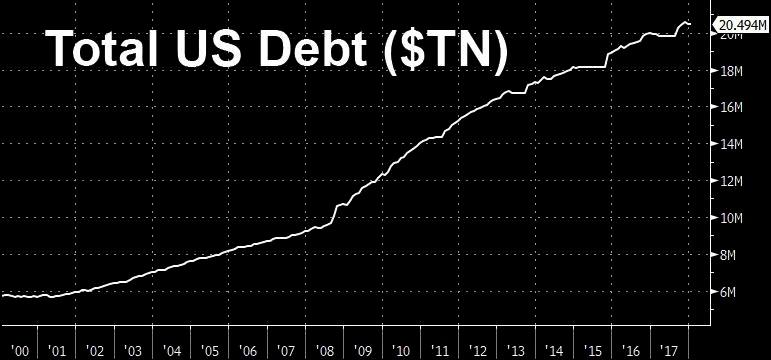
U.S. FINANCIAL RISKS

U.S. OFR - The U.S. Office of Financial Research (OFR) released its 2018 Annual Report to Congress, stating that risks to U.S. financial stability remain in the medium range, reflecting a mix of high, moderate, and low risks to the financial system.
As required by the Dodd-Frank Wall Street Reform and Consumer Protection Act of 2010, the report assesses the state of the U. S. financial system, including an analysis of potential emerging threats to the financial stability of the United States, key findings from the OFR’s research and analysis, and the status of the efforts of the OFR in meeting its statutory obligations and fulfilling its mission.
“I want to thank the women and men of the OFR workforce for their continued diligence and dedication this past year,” said OFR Acting Director Ken Phelan. “Today’s report shows the level of commitment of the OFR to its vital mission of monitoring and analyzing risks to financial stability, while improving the scope, quality, and accessibility of financial data.”
Key takeaways from the financial stability assessment are:
- Macroeconomic risks remain moderate. Although unemployment is exceptionally low, growth remains healthy, and inflation is close to the Federal Reserve’s target, the OFR sees more risks to the outlook than in the previous year.
- Market risks remain high. Similar to last year, stock prices remain historically high, and bond prices are more vulnerable to price declines than in the previous year because of the possibility that interest rates could rise quickly.
- Credit risk is moderate. Nonfinancial corporate credit growth is robust, credit quality shows signs of weakening, and credit risk is rising with growth in leveraged lending. Consumer credit remains a lesser concern.
- Solvency and leverage risks remain low under most conditions. Large banks and insurers hold capital well above regulatory minimum requirements, but a few U.S. global systemically important banks could fall below those minimums under severely adverse conditions.
- Funding and liquidity conditions are generally good and continue to support corporate borrowing. For large banks, funding and liquidity risks appear low. Market liquidity risks also appear low, but can change rapidly.
- Contagion risks are moderate. Risks to the financial system from the largest U.S. banks remain low, although derivatives exposures are still a source of contagion risk throughout the financial system.
- Other risks bear watching. Cybersecurity remains a key risk. Digital assets, commonly known as cryptocurrencies, are not a concern at this point, but are worth monitoring because their use is rapidly growing and evolving.
The report includes a spotlight on financial markets that focuses on changes in stock market volatility and corporate bond market liquidity, and the implications of these changes for the stability of the financial system.
In addition, the report discusses the OFR’s data initiatives, including a proposed rule to collect data on cleared bilateral repurchase agreements, or repos, an important source of short-term funding in the financial system. The proposed repo rule will improve regulators’ ability to monitor risks to financial stability. As the proposed rule says, the collected data will also support the calculation of the Secured Overnight Funding Rate (SOFR), which the Alternative Reference Rates Committee selected as its preferred alternative to U.S. dollar London Interbank Offered Rate (LIBOR), the interest rate benchmark. LIBOR has been used to set interest rates on trillions of dollars of retail mortgages, private student loans, corporate loans, derivatives, and other financial products.
The report also contains updates on the OFR’s work to improve financial data standards, including by advancing the Legal Entity Identifier (LEI), a data standard similar to a bar code that identifies parties to financial transactions.
In describing the status of the OFR’s efforts to fulfill its mission, the report discusses the initiative to refocus the mission on primarily supporting the Financial Stability Oversight Council and its member agencies.
The OFR 2018 Annual Report to Congress is available here.
-----
Earlier:

2018, November, 9, 14:45:00
U.S. FEDERAL FUNDS RATE 2.25%U.S. FRB - In view of realized and expected labor market conditions and inflation, the Committee decided to maintain the target range for the federal funds rate at 2 to 2-1/4 percent.
|

2018, November, 5, 12:05:00
U.S. DEFICIT UP $0.7 BLN TO $54.0 BLNU.S. BEA - The U.S. Census Bureau and the U.S. Bureau of Economic Analysis announced today that the goods and services deficit was $54.0 billion in September, up $0.7 billion from $53.3 billion in August,
|

2018, November, 5, 12:01:00
U.S. UNEMPLOYMENT 3.7%U.S. BLS - Total nonfarm payroll employment rose by 250,000 in October, and the unemployment rate was unchanged at 3.7 percent, the U.S. Bureau of Labor Statistics reported today. Job gains occurred in health care, in manufacturing, in construction, and in transportation and warehousing.
|

2018, October, 29, 12:15:00
U.S. GDP UP 3.5%U.S. BEA - Real gross domestic product (GDP) increased at an annual rate of 3.5 percent in the third quarter of 2018 (table 1), according to the "advance" estimate released by the Bureau of Economic Analysis. In the second quarter, real GDP increased 4.2 percent.
|

2018, October, 17, 09:45:00
U.S. INDUSTRIAL PRODUCTION UP 0.3%U.S. FRB - Industrial production increased 0.3 percent in September, about the same rate of change as in the previous two months. Output growth in September was held down slightly by Hurricane Florence, with an estimated effect of less than 0.1 percentage point.
|

2018, October, 8, 10:20:00
U.S. DEFICIT UP $3.2 BLN TO $53.2 BLNU.S. BEA - The U.S. Census Bureau and the U.S. Bureau of Economic Analysis announced today that the goods and services deficit was $53.2 billion in August, up $3.2 billion from $50.0 billion in July,
|

2018, September, 28, 09:40:00
U.S. GDP UP 4.2%U.S. BEA - Real gross domestic product (GDP) increased at an annual rate of 4.2 percent in the second quarter of 2018, according to the "third" estimate released by the Bureau of Economic Analysis. In the first quarter, real GDP increased 2.2 percent. |












